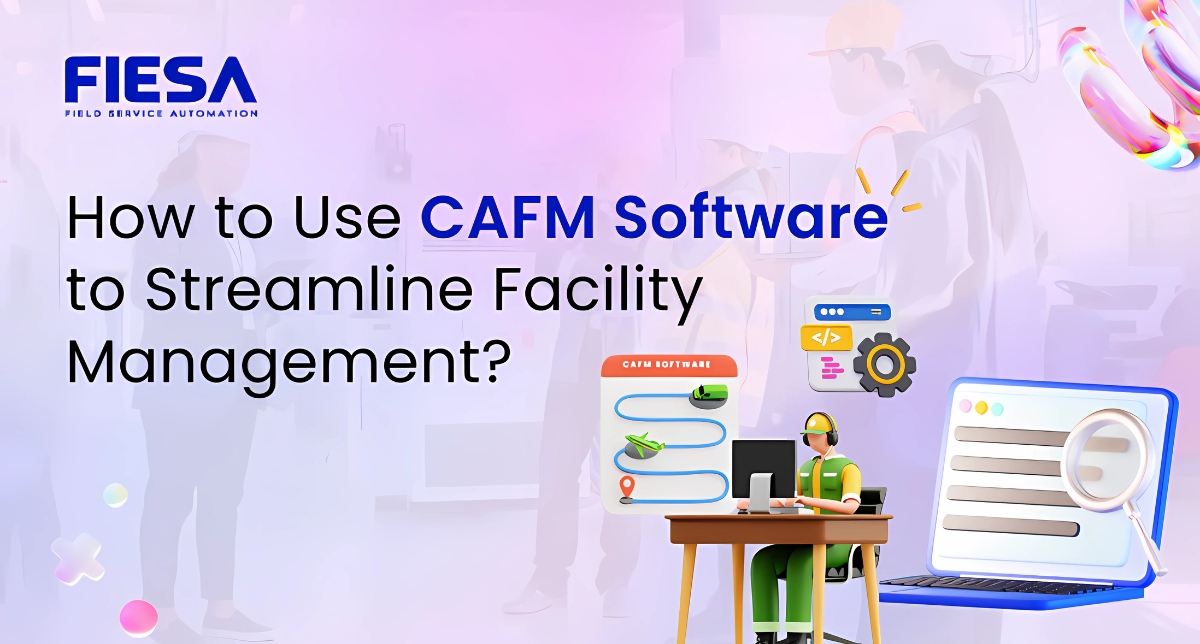
Efficiency in facilities management business is essential – it’s like a make-or-break situation for them. That’s where CAFM (Computer-Aided Facility Management) software comes to rescue – it’s time that field service or facilities management businesses adopt digital transformation to manage physical spaces, equipment, and services, efficiently.
If you really think that CAFM software can simplify complex facility operations, you can continue reading. This blog will take you through the entire process, offering practical steps and insights to help you get the most out of your CAFM system.
Why CAFM Software Is More Than Just a Tool?
Implementing a CAFM software isn’t just about installing and forgetting. But to truly unlock its potential, it must be treated like a central platform for decision-making, task automation, and intelligence.
Unlike traditional spreadsheets or manual workflows, CAFM software enables real-time asset tracking, automated maintenance, smarter resource planning, and powerful analytics – without switching tabs with a single dashboard.
Step-by-Step Guide: How to Use CAFM Software Effectively
1. Define Your Goals
Before diving into the system, align your CAFM usage with clear objectives:
- Automate Task Allocation
- Reduce maintenance downtime
- Be Future Ready with IoT
- Optimize Routes for Faster Accessibility
- Elevate Customer Satisfaction
Having defined outcomes ensures your CAFM setup is tailored to your needs – not just a generic deployment.
2. Centralize All Facility Data
Import building layouts, asset information, vendor contacts, compliance documents, and maintenance logs. Your CAFM software becomes a digital command centre for everything facility related. Standardize your data formats before upload to avoid system conflicts on the CAFM.
3. Configure Workflows That Match Your Operations
Set up automated rules for:
- Work order management
- Escalations
- Preventive maintenance scheduling
- Real-time communication
This turns CAFM into a self-operating ecosystem rather than a manual dashboard.
4. Onboard Teams and Assign Roles
CAFM is most effective when the entire team contributes together – from maintenance staff to facility heads. Customize access rights and provide training for each user group:
- Technicians
- Facility managers
- Finance/admin teams
5. Use the Mobile App for Field Efficiency
Many CAFM solutions offer mobile versions. These are essential for technicians in the field to:
- Access work orders
- Upload asset photos
- Log updates in real-time
Mobility speeds up operations and ensures on-site accountability.
6. Monitor KPIs Using Dashboards and Reports
Track metrics such as:
- Average response time to service requests
- Energy usage trends
- Asset lifecycle status
- Space occupancy rates
This is where CAFM transforms from a system into a strategic business tool.
Tips to Maximize CAFM Efficiency
- Integrate with existing systems like HR, accounting, or ERP to eliminate data silos.
- Automate recurring tasks (e.g., filter changes, safety inspections).
- Review reports monthly to catch inefficiencies or cost leaks early.
- Update floor plans and asset records regularly.
Real-World Example: Using CAFM to Manage Multi-Location Facilities
Let’s say you manage office buildings across five cities.
With CAFM:
- You can monitor HVAC maintenance schedules for each building from one dashboard.
- Automatically assign tasks to on-site technicians based on proximity and availability.
- Track occupancy trends to reallocate underutilized spaces.
The result? Lower maintenance costs, faster task resolution, and data-backed real estate decisions.
CAFM Software for Sustainability and Compliance
Modern facility management software isn’t just about convenience – it’s essential for meeting sustainability goals and compliance standards.
With CAFM, you can:
- Track energy usage to identify waste
- Automate safety checks and compliance reports
- Set alerts for equipment nearing regulatory deadlines
Using CAFM software isn’t just about digital transformation – it’s about making smarter decisions every day. Whether you’re managing a single building or a global portfolio, following a structured approach ensures you get the full value from your investment.
Ready to dive deeper into how CAFM works and why it matters? Explore our foundational guide on Computer-Aided Facility Management.
